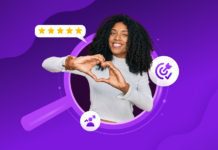Those in the world of Neuro Linguistic Programming (or NLP), have discovered that most people prefer a primary channel of communication. Some people are auditory, meaning they comprehend and communicate best with the spoken word. Some are kinesthetic. These people speak in the language of emotion. While a lot of people are visual learners, which means they prefer to read information or have it communicated to them through a medium like video or a film.
While every human uses a combination of each of the above, it seems that we tend to have a favorite type in daily interactions. The type can be easily discovered by the language that people use.
If someone says something like “I hear what you are saying” then they are likely in the auditory category. Visual people will say things like “looks good to me” or “I see what you mean.” A kinesthetic type will give you clues with phrases like “I can feel where you are coming from.”
In today’s omnichannel environment, it’s important that each of these types are represented and serviced. However, there is an especially visceral power when it comes to providing customers with visual platforms and channels.
Why Visual?
In a report by Forresters, more than a quarter (32%) of customers used screen sharing for customer service in 2016. Another 32% also claimed to have used video chat. Together, those numbers point to a large market segment that prefers to see their interactions in real time.
According to a paper published by Forrester Research, visual engagement drives relationships and revenue for customer service. This is likely due to the fact that “allowing customers to see more of the company through visual communications can give them the reassurance to build trust.”
What Defines Visual Engagement?
When it comes to actionable language based on extensive research, Glia defines visual engagement as “communicating or engaging with customers visually in the form of screen sharing, CoBrowsing, or face-to-face video conferencing.”
How does that information apply to companies that are looking to onboard visually engaging channels?
It takes more than just a box on the bottom of the screen that allows for a chat conversation. While standard chat can be a powerful channel of communication, the rise of AI driven chatbots has diminished customer’s faith in its authenticity.
For this reason, a customer’s trust relies on a combination of text based chat solutions that are transparently authentic and hybrid platforms that combine video conferencing with chat and auditory conversations supplemented by X Factors like CoBrowsing.
The X Factor that Ties it all Together
One could argue that text chat is viable as a visual engagement platform, as the customer has to read the screen in front of them to continue the conversation.Much the same, video chat could easily be championed as an effective model of engagement that can keep customers from disconnecting due to the format’s level potential for personability.
The X Factor in a visual engagement solution is CoBrowsing. CoBrowsing is even more powerful when fused with video and text chat.There are three magic words that can elevate a customer interaction from being a “visual platform” to a “visual conversation.”Those three words?“Show, don’t tell.”
“Show, don’t tell” has become the de rigueur amongst fictional story tellers. Companies must be authentic. The art of storytelling is what has been separating the signal from the noise in terms of on message branding in today’s content laden online landscape.
CoBrowsing is all about the show. And with additional channels in play, companies can show and tell at the same time, oscillating between channels to provide message-driven interactions that align with the NLP communication profiles outlined above.
In Conclusion
Visual engagement channels are essential in keeping up with competition.
To quantify the above statement:
-
- An estimated 79% of internet traffic will be video content by 2018.
-
- A study of businesses by Chegg indicates that 81 of 129 CoBrowsing organizations use skills-based routing to match the customer with the right agent, whereas 65 of 176 non CoBrowsing organization are able to match the customer with the right agent. When factored en masse, that’s a lot of whitespace.
- According to Aberdeen, “companies with extremely strong omnichannel customer engagement retain, on average, 89% of their customers, compared to 33% for companies with weak omnichannel customer engagement.”
With these numbers in mind, it’s apparent that visual engagement is driving customer loyalty and interactions that are measurably efficacious, even though platforms like CoBrowsing are still relatively new.
Instead of spending valuable resources like time and effort with onboarding and training, Glia offers a multi-award winning suite of solutions that engages customers on a visual level while also servicing customers that prefer to combine their visual channels with auditory and other more traditional solutions.
For a demo or for more information on Glia’s patented and fully integrated OmniCore platform, visit our website.




